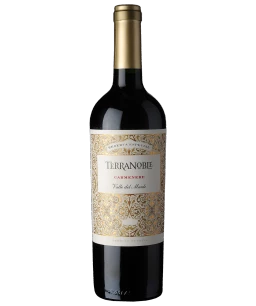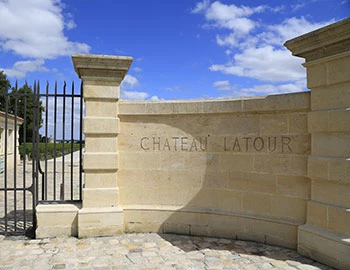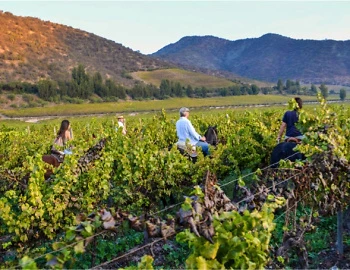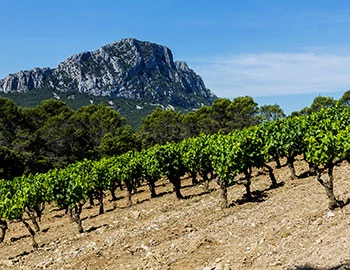Maule
Maule: the heart of Chilean viticulture
With a cultivation area of nearly 30,000 hectares, Chile's largest wine cultivation area is also the southernmost sub-region of the Valle Central. Situated roughly 250 kilometers south of the capital of Santiago, the Cabernet Sauvignon variety and the Chilean specialty, Carménère, demonstrate their excellent potential here. Spanish immigrants in Maule had already established the first vineyards in the 16th century. In the last 20 years, the trend has moved towards fruitier wines with slightly lower alcohol content.
Red wines from Maule
The Maule River (Río Maule) originates in the Andean foothills near the Argentinian border, flowing into the Pacific 240 kilometres west at the port city of Constitucion. Most wineries are located in the western centre of the broad valley, which is protected by coastal mountains from the overly cold influence of the Pacific. A Mediterranean climate prevails during the growing season, albeit with considerable variations between daily highs and nightly lows, lending red wines plenty of structure and intense fruit. Precipitation, at least 735 millimetres per year per square metre here, is almost three times higher than in the north of the Valle Central. Because the rain mostly falls during the winter months, the majority of vineyards are equipped with drip irrigation systems.
From País to Cabernet
Just 30 years ago, the most cultivated variety was País, also called the Mission grape. This variety was already cultivated by Spanish clergy when the land was colonised, in order to produce wine for the holy mass. But because País yields highly rustic wines, the cultivation area fell to only 3,000 hectares. The leading variety today is definitely Cabernet Sauvignon, with an area of almost 15,000 hectares. Carménère also yields highly impressive wines, especially since it has stopped being mixed with Merlot and is instead vinified as a varietal. The age-old and long-forgotten Carignan stocks are a true specialty, producing a variety of highly concentrated delicacies.
Soils high in loam
Vines in the Maule Valley are rooted mainly in volcanic soils with high levels of clay and varying proportions of sand. The soils near the river, which tend to be heavy, produce fruitier wines than in the valley flanks. In the area of several depressions in the coastal mountains, through which locally cool air flows into the valley, the Chardonnays and Sauvignon Blancs that are typical of these varieties also succeed. A significant proportion of the vineyards in Maule are cultivated with certified organic methods.








